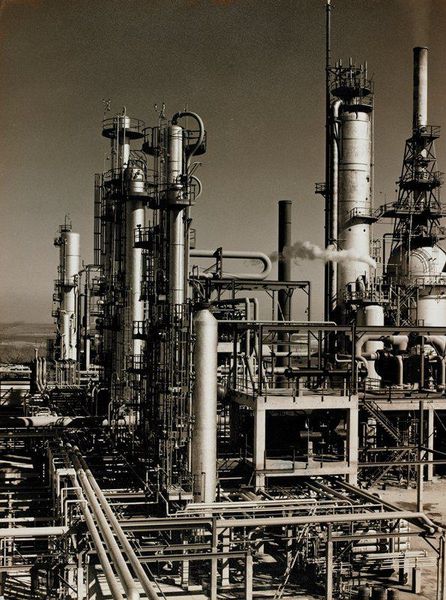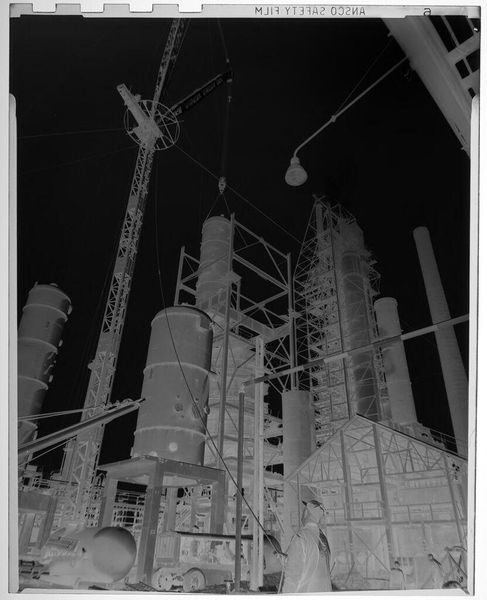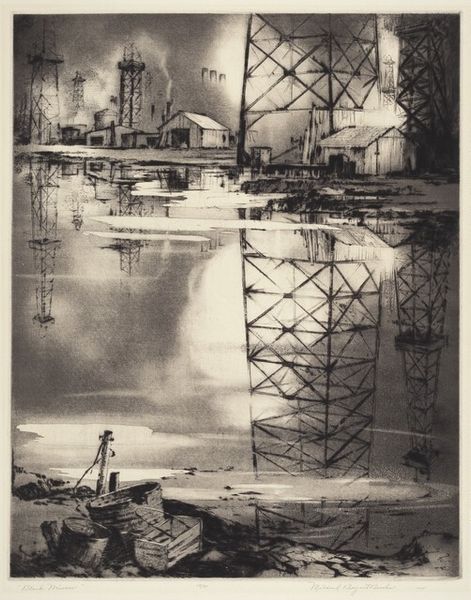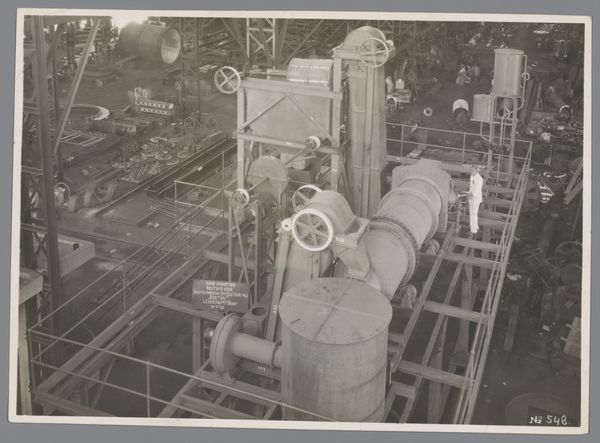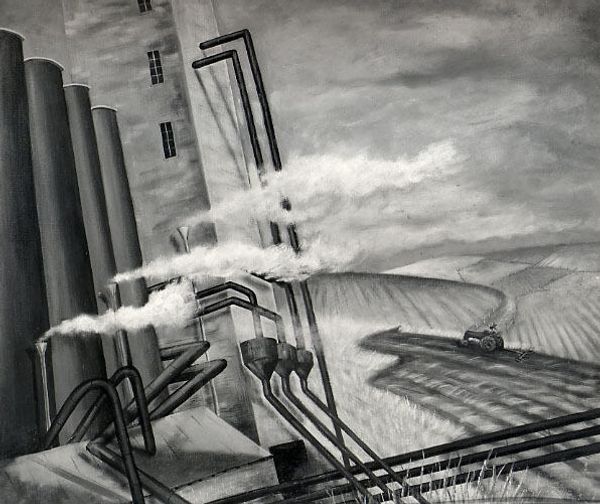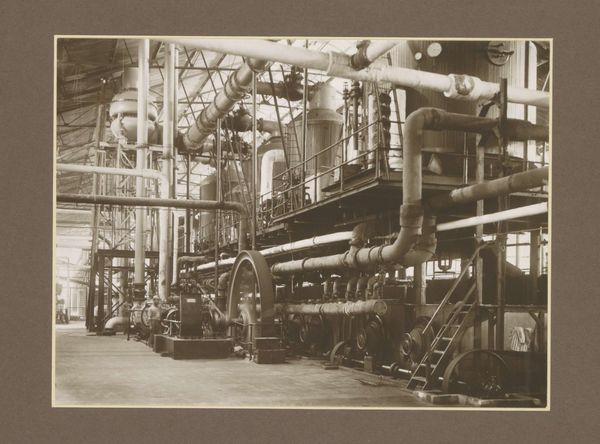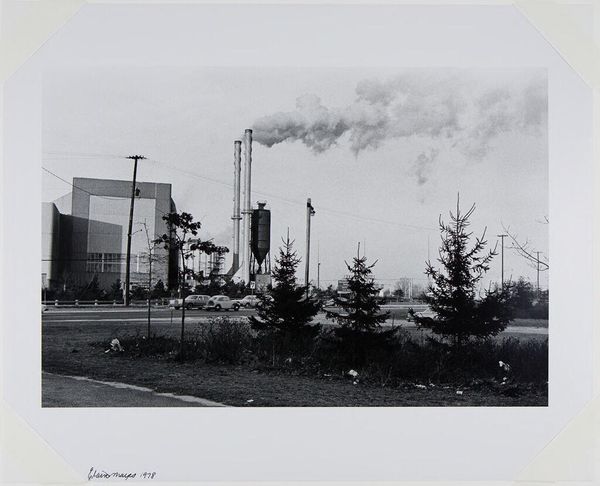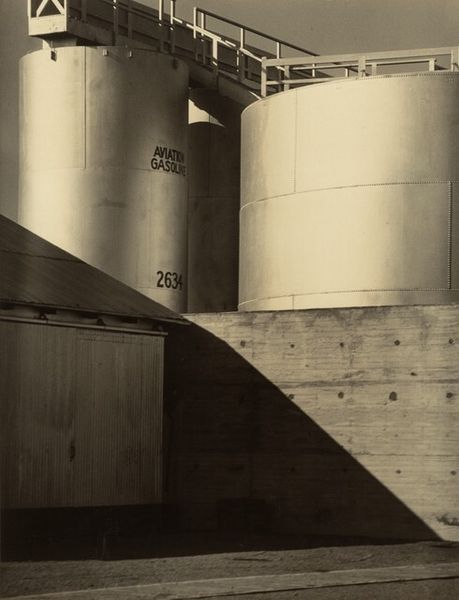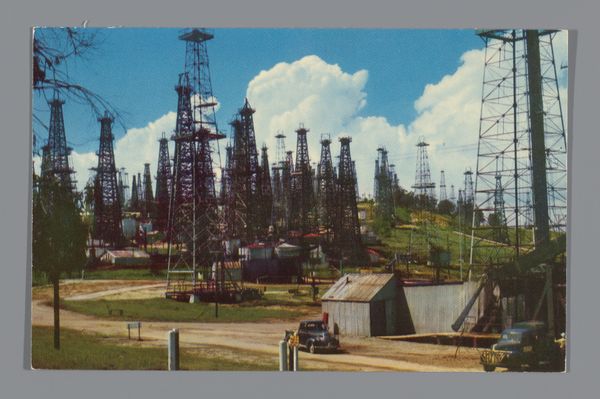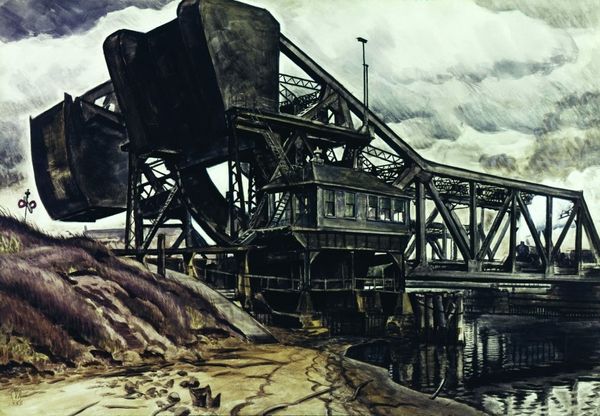
gelatin-silver-print, photography, gelatin-silver-print
#
precisionism
#
gelatin-silver-print
#
photography
#
black and white
#
gelatin-silver-print
#
monochrome photography
#
united-states
#
cityscape
#
monochrome
#
modernism
Dimensions: 7 5/8 x 9 1/2 in. (19.37 x 24.13 cm) (image)8 1/8 x 10 in. (20.64 x 25.4 cm) (sheet)
Copyright: No Known Copyright
Editor: So, this gelatin-silver print, titled "Refinery," was created around 1949 by William R. Terrell. There's something stark and almost alien about the landscape. What do you see in this piece? Curator: It’s a potent image, isn’t it? Terrell’s “Refinery” compels us to consider the narratives interwoven with industrial landscapes. Looking at this photograph, especially considering its creation in the post-war era, I see not only precisionism and modernist aesthetics, but a reflection on power, labor, and environmental impact. How does its geometric portrayal evoke both progress and perhaps a looming sense of something lost? Editor: I guess it does feel like there’s a trade-off implied, the "progress" coming at the cost of something else... Were photographers at the time actively thinking about this dichotomy? Curator: Many were. Photography provided a unique lens through which to document and critique industrialization. The very act of photographing these structures was a statement. It acknowledged their dominance while also allowing for questions to be raised. What role does the photographer play in either glorifying or critiquing such subjects? Is it possible to do both simultaneously? What communities are directly affected by it? Editor: It's interesting how the image exists as both a record and a question. Seeing it in black and white heightens the feeling of… ambiguity, maybe. Curator: Absolutely. The absence of color can amplify the underlying social and political questions. And beyond that, who controls the means of production and whose stories are elevated versus those that are silenced become key points for contemplation. It’s a reminder that even seemingly objective representations can carry significant weight. Editor: Thanks, this was helpful to have context to the themes it suggests about society. Curator: Likewise, reflecting on the photographic interpretation alongside the industrial reality can illuminate complex, and important facets of society and history.
Comments
No comments
Be the first to comment and join the conversation on the ultimate creative platform.
